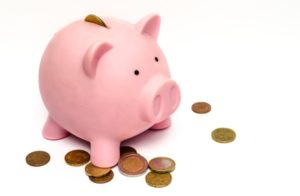The personal savings allowance for a basic rate taxpayer is currently set at £1,000. This means you can earn up to £1,000 per year in interest on your savings without having to pay tax on it. The allowance is reduced to £500 for higher rate taxpayers and is reduced to zero for those earners that are in the highest tax bracket (known as the 'additional rate').
What type of interest is included in the personal savings allowance?
Any interest you earn through bank accounts, savings accounts, building societies, corporate bonds, government bonds, gilts and peer-to-peer lending. It also includes interest earned on other currencies (such as euros or dollars) that are held in UK bank accounts.
Dividend income from shares or funds is not included
Does the interest I earn in my ISA count towards my personal allowance?
No, interest earned through tax-free vehicles such as an ISA or winnings from premium bonds won't count towards your personal savings allowance. If you are a basic rate taxpayer and you earn £1,000 in interest through an ISA, you would still have your full £1,000 personal savings allowance remaining.
How you can earn up to £6,000 in interest without paying any tax
What is the starting savings rate allowance?
The starting savings rate allowance was introduced in April 2015 and is designed to ensure that low earners pay less tax on their savings.
How does it work?
Depending on your earnings, the starting savings rate allows you to earn up to £5,000 per year in interest without paying any tax, plus you then get the personal savings allowance added on top (£1,000 for basic rate taxpayers and £500 for higher rate taxpayers)
What are the earnings limits on the starting savings rate allowance?
You would need to earn below the basic rate income tax threshold (or in other words you can earn up to the personal income tax-free allowance of £12,570 for 2024/25) to qualify for the full savings rate allowance of £5,000. For every £1 you go over the basic rate tax threshold, you lose £1 of the starting savings rate allowance. We have created a table below to demonstrate this.
| Assumed Income | Assumed Interest from Savings | Starting Savings Rate Allowance | Personal Savings Allowance | Total Allowance applicable to Savings | Amount of Savings Interest that is taxable | Tax Paid on Interest |
| Under £12,570 | £6,000 | £5,000 | £1,000 | £6,000 | £0 | £0 |
| £13,570 | £6,000 | £4,000 | £1,000 | £5,000 | £1,000 | £200 |
| £14,570 | £6,000 | £3,000 | £1,000 | £4,000 | £2,000 | £400 |
| £15,570 | £6,000 | £2,000 | £1,000 | £3,000 | £3,000 | £600 |
| £16,570 | £6,000 | £1,000 | £1,000 | £2,000 | £4,000 | £800 |
| £17,570 | £6,000 | £0 | £1,000 | £1,000 | £5,000 | £1,000 |
| £18,570 | £6,000 | £0 | £1,000 | £1,000 | £5,000 | £1,000 |
Where it gets slightly more complicated is if you are in receipt of additional benefits that increase your basic rate tax allowance (such as married person's allowance). A quick and easy way to work out the impact is to simply reduce your interest from savings by the amount of the additional benefit. So if the person in the example above received an extra £1,000 in married person's allowance, simply reduce the interest from savings by £1,000.
How do I pay the tax I owe on my savings interest?
If, after taking advantage of both the starting savings rate allowance and personal savings allowance you still owe tax, you will need to make sure this is paid. The tax will either be collected via self-assessment or, if you don't do self-assessment, then it will be collected via a change in your tax code via PAYE .
How do I reclaim my overpaid tax on interest?
If you have paid too much tax on your savings interest in previous years, you can reclaim it. You will either need to complete a R40 refund form, or you can reclaim any overpaid tax through your self-assessment.





